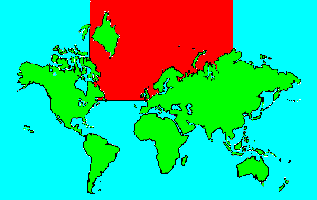SPECIES INFO
Twaite shad (Alosa fallax) can be found in both fresh and salt water. The young are born in freshwater, and then migrate to the open sea. After reaching maturity they migrate back to fresh water to breed. There are several permanent European populations in fresh water. This shad is found from Norway south through France and the British Isles around Spain into the Mediterranean as far east as Italy and also along the shores of northern Africa. This shad normally reaches about 16 inches in length, but records exist near 22 inches. This shad has a small dorsal fin located in the center of the body and a forked tail and 6-7 black spots high on the side of the fish.Herrings, sardines, or pilchards (Family Clupeidae) number about 180 species distributed among about 65 different genera. These fish are found worldwide. Most species are smaller kinds. These schooling fish can occur in gigantic quantities, and they serve both ocean predators and humans as an important food source.
The herring order (Clupeiformes) is found worldwide in marine environments. Several species are found in freshwater. The anchovies (Engraulidae), the wolf herrings (Chirocentridae), and the typical herrings (Clupeidae) belong here.
Bony fish, Class Teleostomi, are a class of chordates that include the majority of fish-like animals found on earth. They are characterized by a bony jaw and a bony skeleton. They are found in both fresh and marine waters.
Backboned Animals (Phylum Chordata) are the most advanced group of animals on earth. These animals are characterized by having a spinal cord or backbone. Most members have a clearly defined brain that controls the organism through a spinal cord. Fish, amphibians, reptiles, birds, and mammals are in this phylum.
Currently, some taxonomists believe that the fish should be divided into two groups (sharks and regular fishes) and that there are some other primitive groups in the phylum such as hagfish or lampreys.
Animal Kingdom contains numerous organisms that feed on other animals or plants. Included in the animal kingdom are the lower marine invertebrates such as sponges and corals, the jointed legged animals such as insects and spiders, and the backboned animals such as fish, amphibians, reptiles, birds, and mammals.

